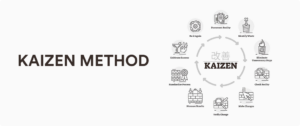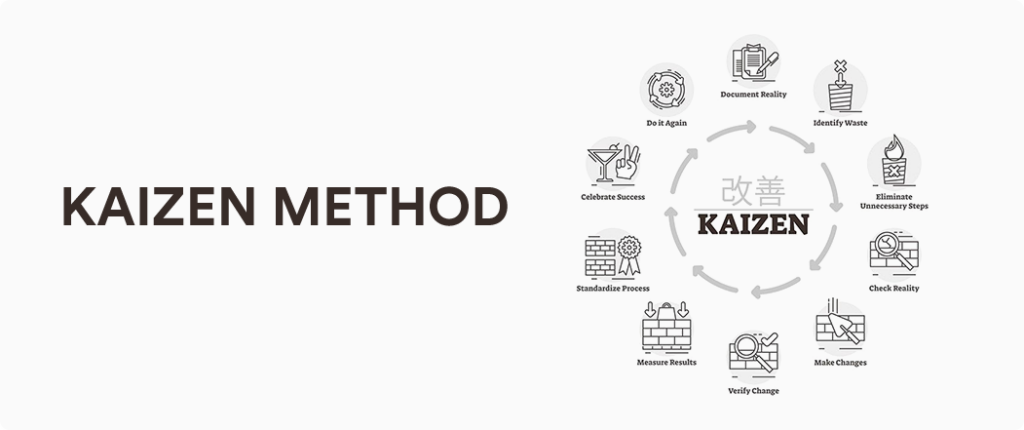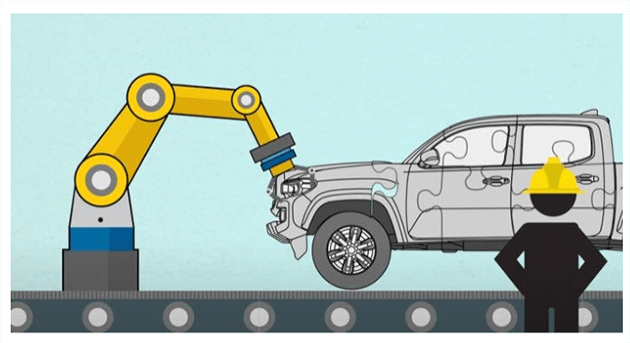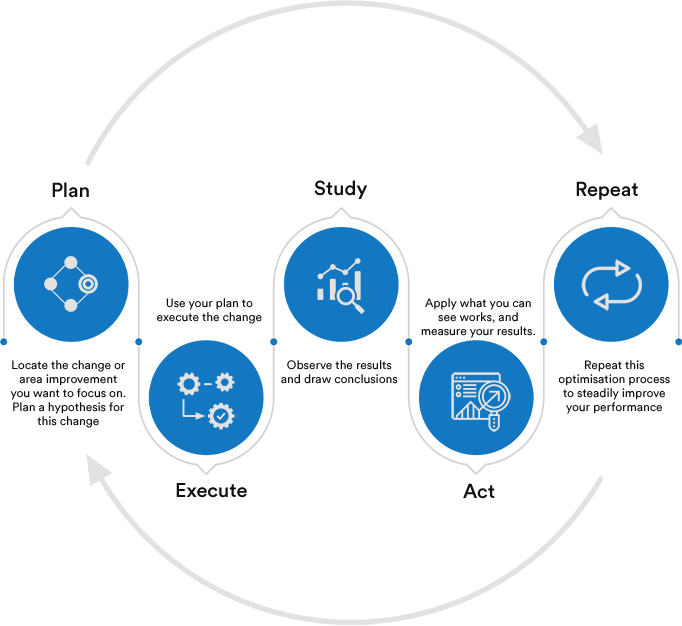
How To Apply The Kaizen Method To Your Business
Read this blog post below, to find out why this 100 year old Japanese philosophy has been the key to success for both small and large companies.

Kaizen Method
Read this blog post below, to find out why this 100 year old Japanese philosophy has been the key to success for both small and large companies.
By Sebastian Alberti, Digital Marketer
Published January 5, 2022 | Read Time: 3 min
Everything can be improved, even your marketing results.
That’s the core principle behind the Kaizen method, a 100 year old philosophy you can apply to your marketing strategy, to steadily improve your results.
It’s also helpful when planning for the year ahead.
At Conversion, we adopted Kaizen early into our methodology, because we operate on the notion of constant improvement or continuous growth.
Achieved by rigorous testing and on-going tweaking, the Kaizen method has given us the keys to running a sound Conversion Optimisation program for our clients, which generates high-term ROI gains, bumps in lead quality, and boosts overall marketing performance.
As we all know, Conversion Rate Optimisation isn’t a once-off, set and forget process, and the Kaizen method helps to support that theory.
Let’s dive in, and take a look at what those Kaizen principles are and how they can be applied to your business, so you too can gain steady growth from your marketing.
No company today, no matter how big or small can rely on past wins. As soon as you stop innovating, you’ll be swallowed by competitors who consistently adapt and progress with the times.
That is why the Kaizen method should be at the heart of growth for any business who operates online.
Here are the key principles of Kaizen and how it originated

Kaizen originated in 1916

Kaizen is a Japanese term using "change" (kai) and "good" (zen), to describe a process labeled "change for the better"

Kaizen seeks total improvement in all areas of a business

Kaizen deliberately seeks out trouble spots, and puts them in the spot light, so necessary improvements can be made
The kaizen method was applied to the manufacturing process of Toyota, who’s mission was to create the worlds most reliable car.
Toyota chief, Akio Toyoda, found that by encouraging employees to stop the manufacturing process, to either identify a fault or suggest an idea of improvement, regardless of it stopping production.

In fact, it was recorded that in a single week, Toyota stopped their production line 2000 times compared to Ford, who stopped theirs on average, twice a week.
Sound’s crazy right? Considering it was probably costing them 100’s of thousands of dollars to do so.
Toyota believed that this never-ending improvement cycle (Kaizen), was the key to their success of becoming a global powerhouse in the automotive industry, now being estimated close to $236 Billion US.
Toyota was one of the first companies in the world to use kaizen for this purpose, and since then many others have adopted kaizen as well.
Although kaizen is usually applied to manufacturing processes, it can be successfully adapted into your marketing strategies as well.
First things first, you will need to get everybody on your team on-board. Make sure your team understands that finding things to improve doesn’t mean you’re strictly looking for mistakes. Improving processes that are already performing well, can lead to even better results.
Once your team is on-board with this learning mentality, you can then introduce them to this simple 5 step process.
Plan – Locate the change or area improvement you want to focus on. Plan a hypothesis for this change
Execute – Use your plan to execute the change
Study – Observe the results and draw conclusions
Act – Apply what you can see works, and measure your results.
Repeat – Repeat this optimisation process to steadily improve your performance
As you can see, testing and measuring are the fundamentals of this 5 step process. Although big gains are always welcome, it’s likely that small, marginal increases, will be the bi-product of the Kaizen method.
Remember Kaizen stands for “change for the better”, regardless of how big of an impact that change is.

Don’t be deterred if your business is only seeing marginal increases. Small, steady changes, compounded over time, can deliver amazing results.
Prioritise testing and measuring as a core focus within your team, and use these steps to improve on past performance, and continuously adapt your business, so you can remain ahead of the times.
What should you do next if you want to apply the Kaizen method?
Assess your current situation, identify areas of your marketing that could do with improvement, decide on which goals you need to track, set an accurate hypothesis, and implement changes that are set to achieve these goals.
Here at Conversion, we use our Conversion Growth program to fuel and sustain growth for our clients, using the Kaizen method.
We suggest creating a program that is similar to ours, if you want to see the same results.
If you need any help with establishing a program that uses the fundamentals of the Kaizen method, then give us a call.

Read this blog post below, to find out why this 100 year old Japanese philosophy has been the key to success for both small and large companies.

Learn how to improve the conversion rate of your landing page, by establishing a hierarchy of importance that appeals to your ideal prospect, and draws their attention exactly where it needs to be.

Driving traffic to a website and getting it to convert is a real challenge these days.

We improve your conversion rate, by turning more browsers into customers.
CX
"*" indicates required fields
By downloading, you agree to converxion’s Privacy Policy and Terms of Use
CX
By downloading, you agree to converxion’s Privacy Policy and Terms of Use
CX
By downloading, you agree to converxion’s Privacy Policy and Terms of Use